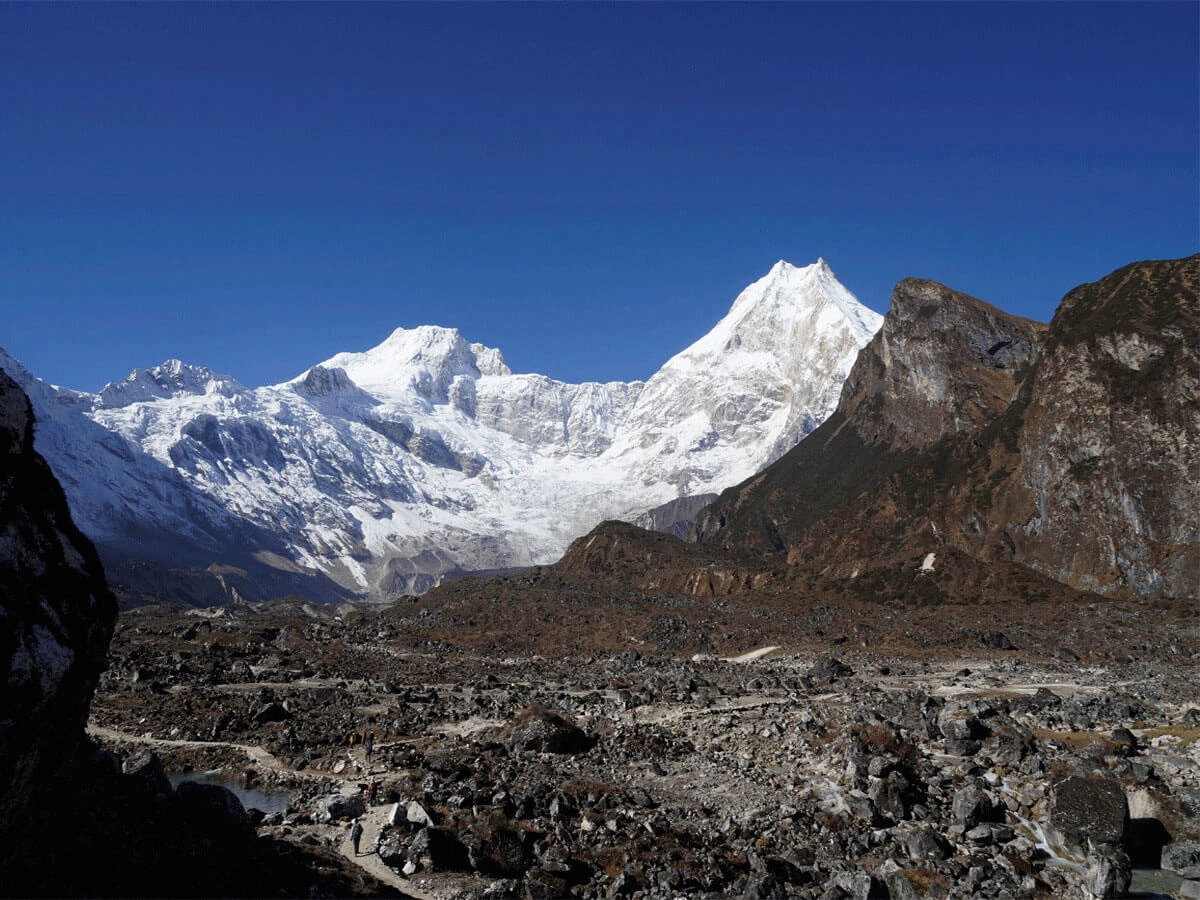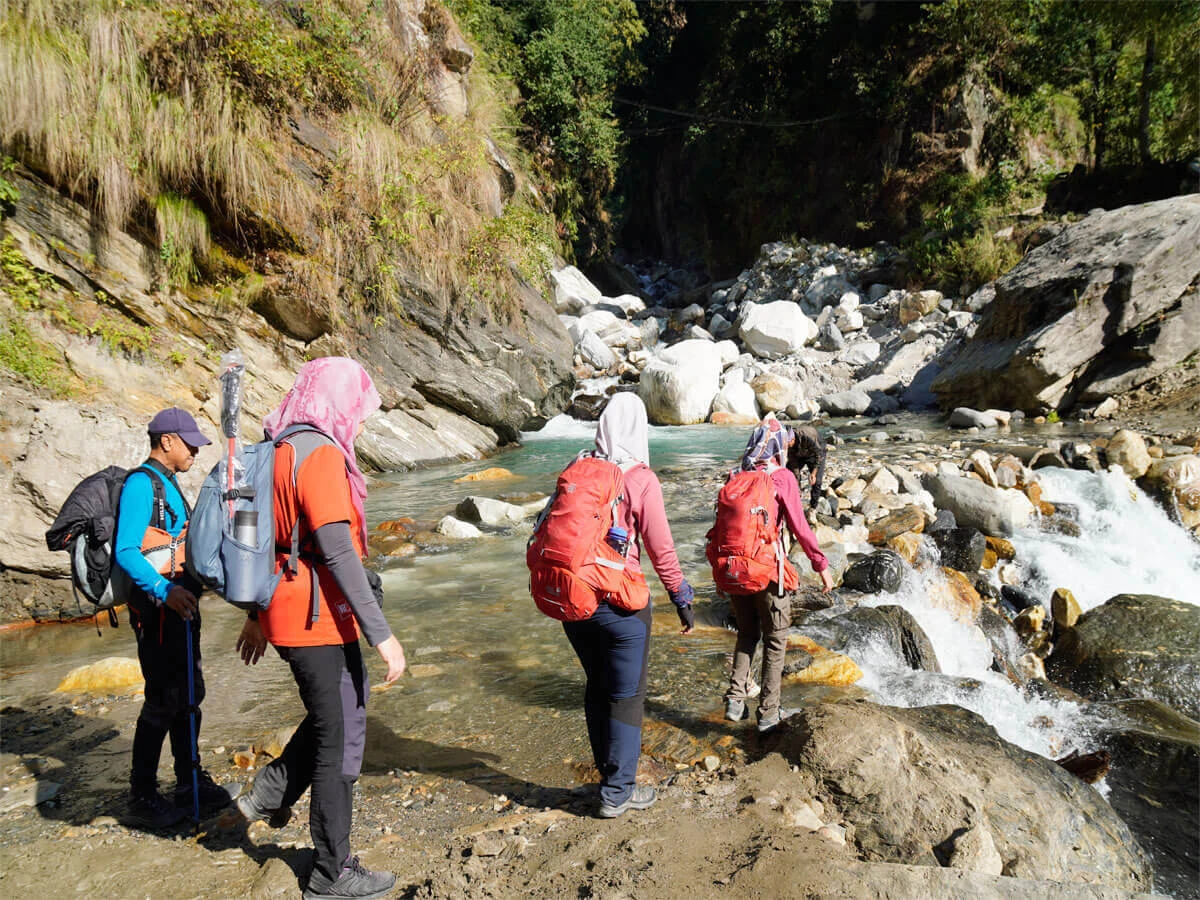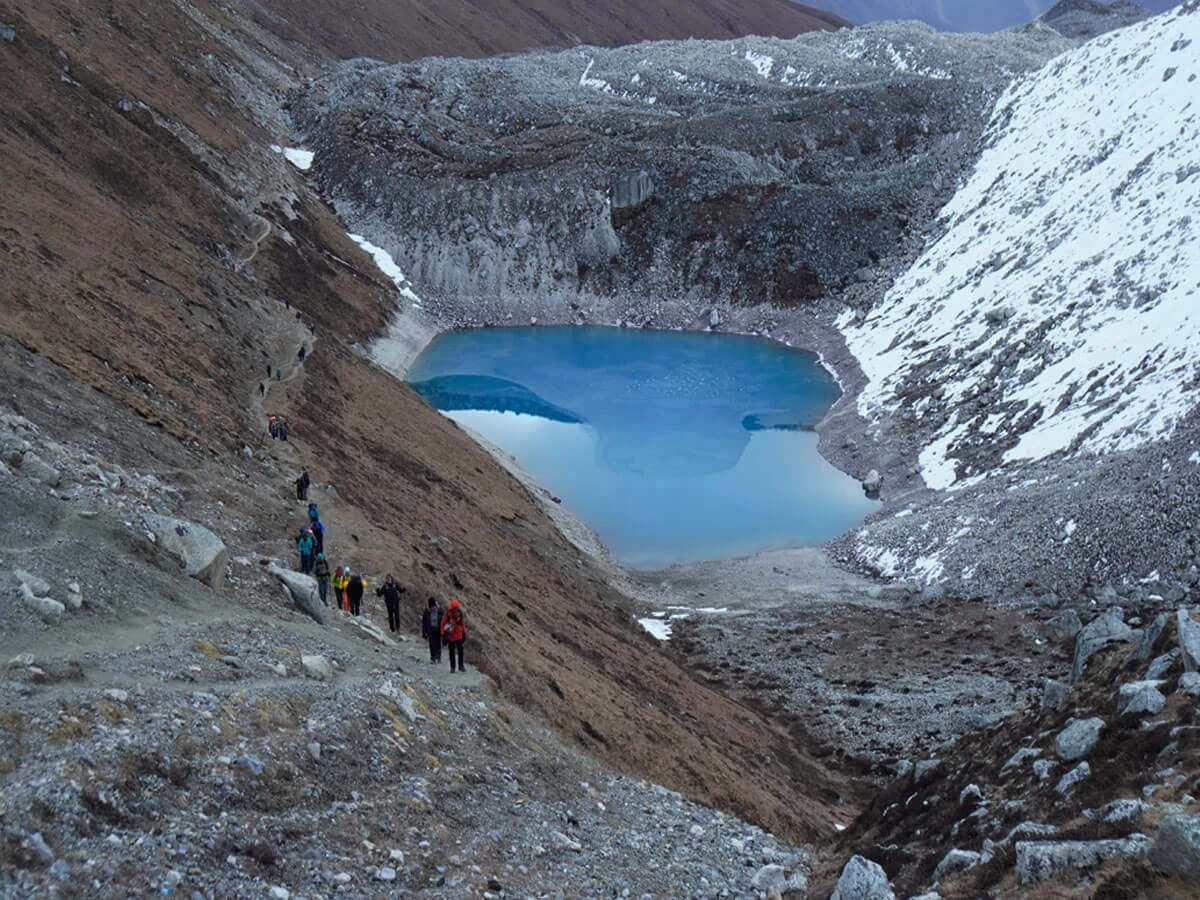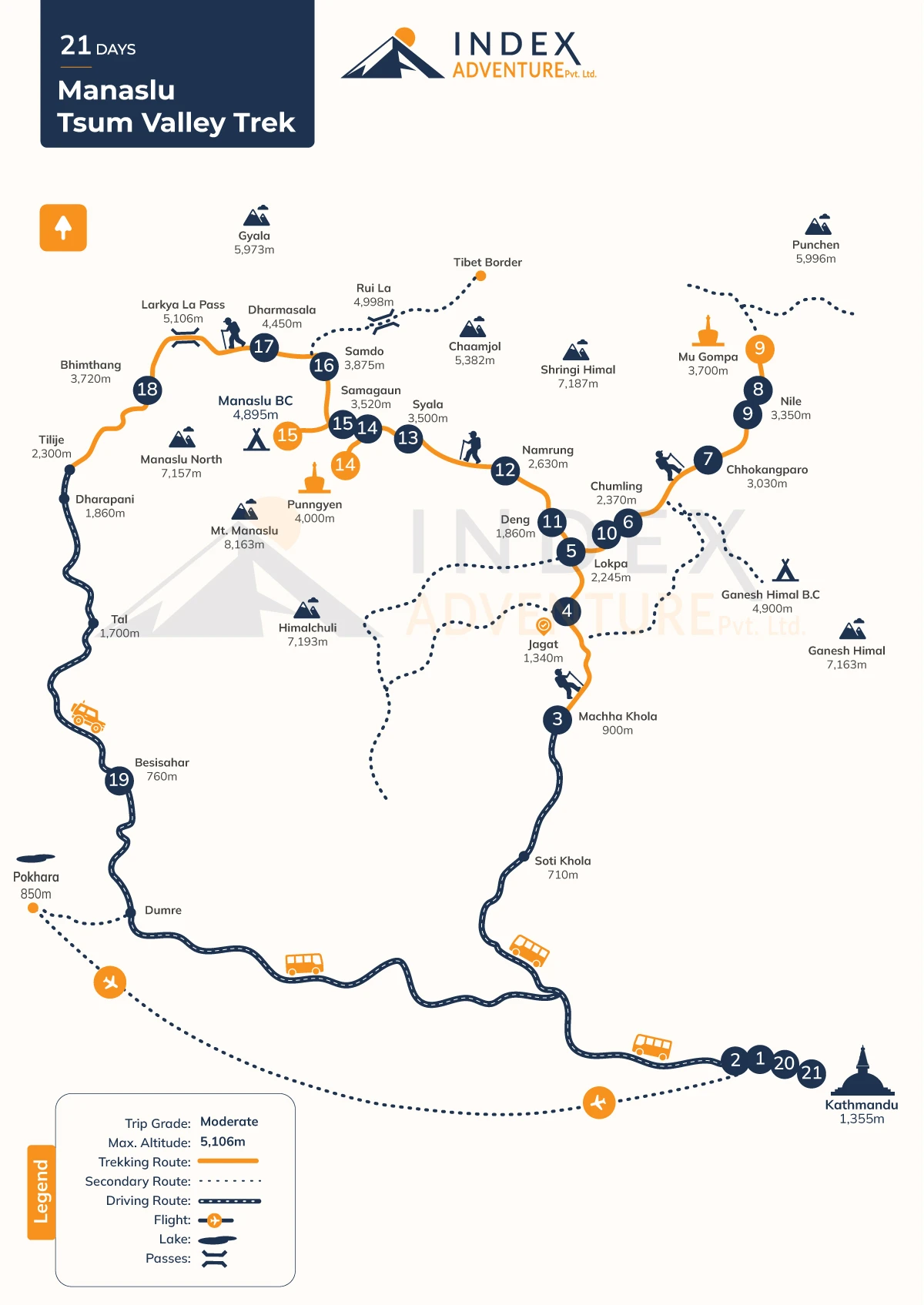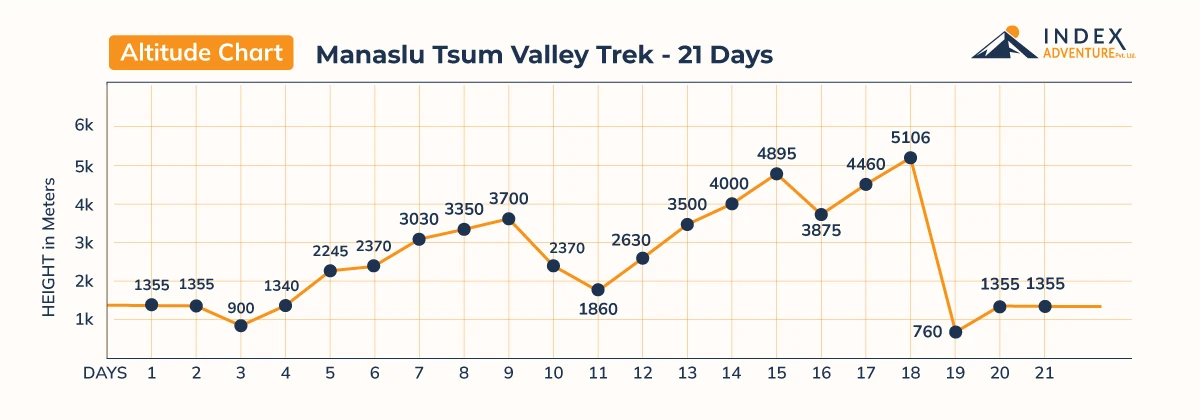Manaslu Tsum Valley Trek 21 days is located northeast of the Manaslu Circuit in the Gorkha district of Nepal. It's a newly popular trekking area with a perfect mountain view and spiritual relief. The Tsum Valley trek is an extended version of the Manaslu Circuit Trek and is combined into the Manaslu Tsum Valley Trek. The trek offers an unparalleled view of Mt.Manaslu (8163 m), along with majestic peaks like Himalchuli, Ngadi Chuli, and Ganesh Himal. At the starting point of the trekking point, you'll meet Hindu and Buddhist communities, while higher level, you’ll meet people of Tibetan culture with the high-altitude Larke La Pass (5,106 m). Manaslu Base Camp, which is situated at an altitude ranging from 710 to 5,106 meters, contains stunning mountain views. The nearby Birendra Lake, which is located close to Samagaun Village, enhances the trek's beauty for trekkers. Check our Manaslu Tsum Valley Trekking package for more information and guidelines for your wonderful Manaslu Tsum Valley trek.
Why Manaslu Tsum Valley Trek?
- Mt. Manaslu (8,163 m), the world’s 8th highest peak, lies in the region.
- Cross Larkya La Pass (5,106 m), one of the longest passes in the Himalayas in Nepal.
- Discover ancient Buddhist stupas /Gomba and the Nuri people's Tibetan lifestyle.
- Magnificent mountain panoramas, various waterfalls, and the Budhi Gandaki River.
- Experience of various religious heritages, including gompas, monasteries, chortens, and others.
- Visit Mu Gompa, Rachen Gompa, Gumba Lungdang, and other magnificent Gompas in the region.
- Trekking is less crowded, which enhances the trekking experience.
- Two renowned tourist regions in Nepal are Manaslu and Annapurna.
- Local crew members serve as comprehensive guides.
- Customized itineraries and trekking blogs.
- Safety of weather conditions and carrying first aid.
Monasteries of Tsum Valley
The Mansi Tsum Valley trek is known for its many Buddhist monasteries and Chortens (stupas) that reflect the rich Tibetan Buddhist culture and heritage. Here are some of the notable monasteries in the Tsum Valley.
Mu Gompa: Mu Gompa is the largest and most well-known monastery in the Tsum Valley, situated at 3,700 meters. The monastery houses around 80 monks and includes a large prayer hall, a school, and a library with ancient Buddhist scriptures.
Rachen Gompa: Rachen Gompa is another significant monastery in Tsum Valley, situated near the Tibetan border. It was founded in the early 20th century and is home to about 80 nuns. The monastery features a large prayer hall, a school, and a retreat center.
Gumba Lungdang: Gumba Lungdang is a picturesque monastery located on a hilltop, offering panoramic views of the Ganesh Himal range. The monastery is home to about 30 monks and features a prayer hall and a small library.
Dephyudonma Gompa: Dephyudonma Gompa is a small monastery that is known for its beautiful frescoes and thangkas (Buddhist paintings on silk) located in the village of Chhokangparo. It is home to about 12 monks and features a prayer hall and a small library.
Milarepa’s Cave: Milarepa’s Cave is a meditation cave that is a pilgrimage site for many Buddhists and offers a glimpse into the ascetic practices of Milarepa. It is believed to be the meditation retreat of the famous Tibetan saint Milarepa.
Best Time for Manaslu Tsum Valley Trek
The best time to trek in the Manaslu Tsum Valley trek is in autumn (October to December). The season offers stable weather after the monsoon with clear skies, breathtaking mountain views, and moderate temperatures. Spring, from April to June, has ideal hiking temperatures and lush, beautiful landscapes. During this season, you can see various wildflowers such as wonderful rhododendrons and golden flowers.
Even though Winter (January to March) and monsoon (June to September) have their uniqueness. So we are not required to do this time trek in the high Himalayas in Nepal.
Climate change due to global warming has impacted the weather in the past few years.
Customized Manaslu Tsum Valley Trekking Itineraries For 2025/2026
We don't have a fixed itinerary for the Manaslu Tsum Valley Trek because we customize each trek to fit your schedule, preferences, and budget. Whether you have a few days or several weeks, we can create an itinerary that suits your needs.
In addition to the Manaslu Circuit, we offer various treks around the Manaslu region and throughout Nepal, allowing you to explore different trails and experiences. Our goal is to provide a personalized trekking adventure that meets your expectations and ensures a memorable journey.
However, these peak seasons can be crowded, so it's important to pre-book your trekking accommodations.
